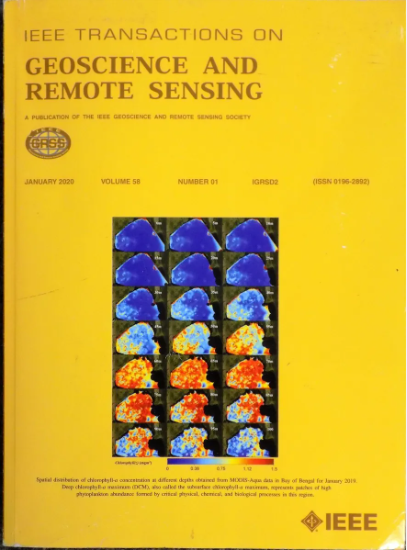An Interferometric Phase Optimization Method Joining Polarimetric and Temporal Dimensions
IF 7.5
1区 地球科学
Q1 ENGINEERING, ELECTRICAL & ELECTRONIC
IEEE Transactions on Geoscience and Remote Sensing
Pub Date : 2025-04-15
DOI:10.1109/TGRS.2025.3556141
引用次数: 0
Abstract
The polarimetric phase optimization method has been integrated into the multitemporal synthetic aperture radar interferometry (MT-InSAR) framework to enhance phase quality and deformation coverage, known as multitemporal polarimetric InSAR (MT-PolInSAR) technology. However, most existing MT-PolInSAR methods optimize phase separately in the temporal and polarimetric dimensions, failing to leverage the interdimensional relationships fully. This article proposes a novel multipolarization optimization method, which achieves one-step phase optimization by joining temporal and polarimetric dimensions based on a joint probability density function and maximum likelihood estimation (MLE). Additionally, a no-threshold regularization is employed to strengthen the stability of the multipolarization covariance matrix. The proposed approach has been validated through synthetic and real quad-polarization datasets. Regarding the real data, ALOS-2/PARSAR-2 from the Fengjie landslide in China and Radarsat-2 data from the Barcelona airport in Spain are used. The experimental outcomes demonstrate that our proposed approach significantly diminishes phase noise while increasing the density of measurement points.求助全文
约1分钟内获得全文
求助全文
来源期刊

IEEE Transactions on Geoscience and Remote Sensing
工程技术-地球化学与地球物理
CiteScore
11.50
自引率
28.00%
发文量
1912
审稿时长
4.0 months
期刊介绍:
IEEE Transactions on Geoscience and Remote Sensing (TGRS) is a monthly publication that focuses on the theory, concepts, and techniques of science and engineering as applied to sensing the land, oceans, atmosphere, and space; and the processing, interpretation, and dissemination of this information.
 求助内容:
求助内容: 应助结果提醒方式:
应助结果提醒方式:


